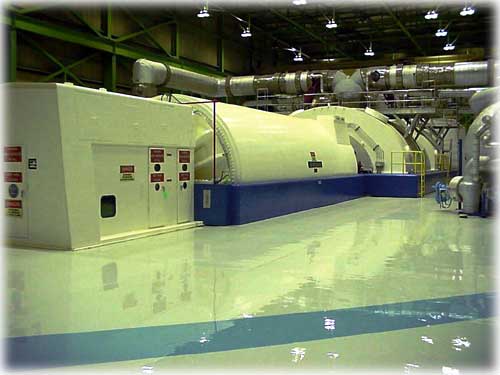 by Bob Ciminel August 10, 2004
 Photo by Bob Ciminel
The accident had absolutely nothing to do with the type of power plant involved. Once you get beyond the reactor side of the plant, everything is essentially the same. The pipes, pumps, valves, and heat exchangers are no different, whether the plant burns coal, oil, natural gas, or uranium. In this case, a pipe ruptured, sending 300-degree Fahrenheit steam into an enclosed area where workers were making preparations for the plant's upcoming maintenance outage. Shortly before a power plant shuts down for maintenance, worker swarm like ants throughout the plant erecting scaffolding around equipment that will be worked on during the shutdown. It is normal for this work to begin while the plant continues generating electricity. Today's economic environment, both here and overseas, demands that power plants keep their outages to an absolute minimum. There are 8,760 hours in a year, and customers, investors, and regulators want the plants making electricity 7,800 of those hours. I expect more of the Japanese workers to die. Remember the last time you lifted the cover on a dish you took out of the microwave oven, or lifted the lid on a pot on the stove. Steam obeys the laws of thermodynamics; at 212 degrees Fahrenheit, steam has 500 times more energy than water at the same temperature. When it touches your skin or clothing, it releases that energy as heat. Personally, I will take my chances with radiation. At worse, it may shorten my life by five or 10 years; there are other hazards in a power plant that will end it much quicker. As one who has talked the talk
and walked the walk, my prayers go out to the Japanese workers
and their families.
|